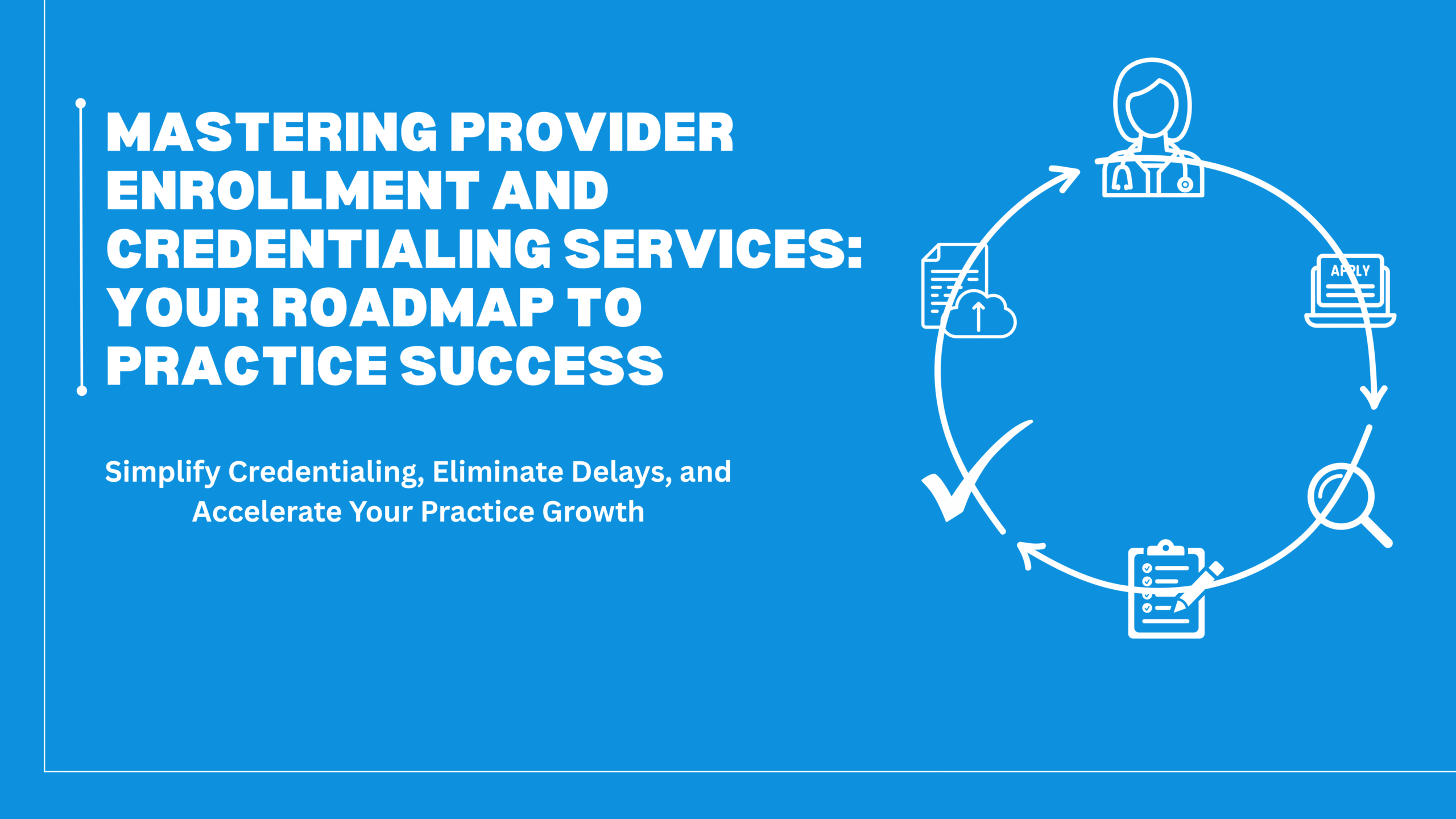
Why Provider Enrollment and Credentialing Services Are Crucial for Practice Growth?
In the fast-paced world of healthcare, provider enrollment and credentialing services stand as critical pillars for financial stability and operational efficiency. Without proper enrollment and credentialing, medical practices face delayed reimbursements, denied claims, and strained patient relationships. This guide defines the enrollment and credentialing process, highlights the value of professional provider credentialing services, and underscores the necessity of credentialing and re-credentialing services in today’s evolving landscape.
Whether you’re a solo practitioner, part of a group practice, or managing a large healthcare organization, the ability to enroll with insurance payers and maintain active credentials impacts your revenue cycle more than you might realize.
What is Provider Enrollment and Credentialing?
Before healthcare professionals can begin billing insurance companies for services, they must go through the enrollment and credentialing process. This process involves verifying a provider’s education, training, licensure, and work history, followed by applying for participation in insurance networks.
There are two key steps:
- Credentialing: Verification of a provider’s qualifications.
- Enrollment: Submitting applications to insurance companies to become an in-network provider.
These steps can take a significant amount of time and may face delays if not handled properly.
Why Credentialing and Enrollment Matter
Without proper credentialing and enrollment, healthcare providers cannot legally bill insurers or receive reimbursements. Delays in this process often result in postponed payments or loss of income, especially for newly opened practices.
Here’s why these services matter:
- Faster Reimbursements: The sooner you’re enrolled, the sooner you can bill.
- Legal Compliance: Avoid penalties or rejections due to improper setup.
- Revenue Protection: Keeps the practice financially stable by preventing claim denials.
- Secure Revenue Flow: Untimely enrollment = unpaid claims.
- Build Trust: Patients rely on in-network providers.
Breaking Down the Enrollment and Credentialing Process
Navigating the enrollment and credentialing process demands precision. Here’s a simplified breakdown:
1. Provider Enrollment
- Application Submission: Complete payer-specific forms (e.g., CMS-855 for Medicare).
- Documentation: Submit licenses, DEA certificates, malpractice insurance, and tax documents.
- Review & Approval: Payers validate details; timelines range from 30–180 days.
- Contracting: Negotiate terms for in-network status.
2. Provider Credentialing
- Primary Source Verification: Payers confirm education, training, licenses, and work history via primary sources (e.g., medical boards).
- Committee Review: A payer panel evaluates your application.
- Decision: Approval grants billing privileges; denials require appeals.
3. Re-credentialing
Every 1–3 years, providers undergo credentialing and re-credentialing services to maintain active status. This involves updating licenses, certifications, and practice history.
Top 4 Challenges in Enrollment and Credentialing
- Time-Consuming Paperwork: Errors in forms cause 30%+ application rejections.
- Payer Variability: Each insurer has unique requirements and timelines.
- Regulatory Changes: State/federal updates (e.g., telehealth rules) complicate compliance.
- Revenue Disruptions: Delays lead to 60–90 days of lost income.
Benefits of Outsourcing Provider Credentialing Services
Partnering with a team that offers provider credentialing services can help you avoid unnecessary hassles. Outsourced professionals handle:
- Application submissions and tracking
- Real-time follow-up with payers
- Data verification and CAQH updates
- Renewal and re-credentialing notifications
- Reduced administrative workload on your office staff
By letting trained specialists manage this critical aspect of your practice, you can free up time for clinical work and improve your cash flow.
Who Needs Credentialing and Enrollment Services?
If you fall into any of these categories, you can benefit from structured credentialing support:
- New healthcare providers entering the system
- Expanding practices adding new clinicians or specialties
- Independent contractors and on call physicians
- Behavioral health specialists, NPs, and PAs
- Medical groups and telehealth companies seeking multi-state enrollment
How we help:
At Pro-MedSole RCM, we understand the pain points of this process. Our team manages the entire workflow from data collection to approval, helping healthcare providers get credentialed and enrolled without unnecessary back-and-forth. Our goal is to keep your revenue stream active and your administrative load light. Our Specialized provider credentialing services transform chaos into clarity:
Accelerated Enrollment
- Real-Time Tracking: Monitor application statuses across multiple payers.
- Error Reduction: Experienced teams prevent form inaccuracies.
- Payer Liaison: Direct communication to expedite approvals.
Stress-Free Credentialing
- Centralized Documentation: Organize licenses, CVs, and attestations.
- Primary Source Follow-Ups: Handle verification requests proactively.
- Expiration Alerts: Automated reminders for license renewals.
Proactive Re-credentialing
- Calendar Management: Schedule re-verification cycles.
- Audit Support: Prepare documentation for committee reviews.
- Gap Prevention: Avoid lapses in billing eligibility.
Final Thoughts
Whether you’re starting your practice or growing your team, provider enrollment and credentialing services are not something to overlook. A delay in credentialing can delay your revenue, and no provider wants to start their practice already behind financially.
If you’re tired of chasing insurance applications, tracking CAQH updates, and worrying about missed deadlines, it’s time to consider professional support.
Contact Pro-MedSole RCM and let us manage your enrollment and credentialing process, so you can focus on what truly matters: your patients.